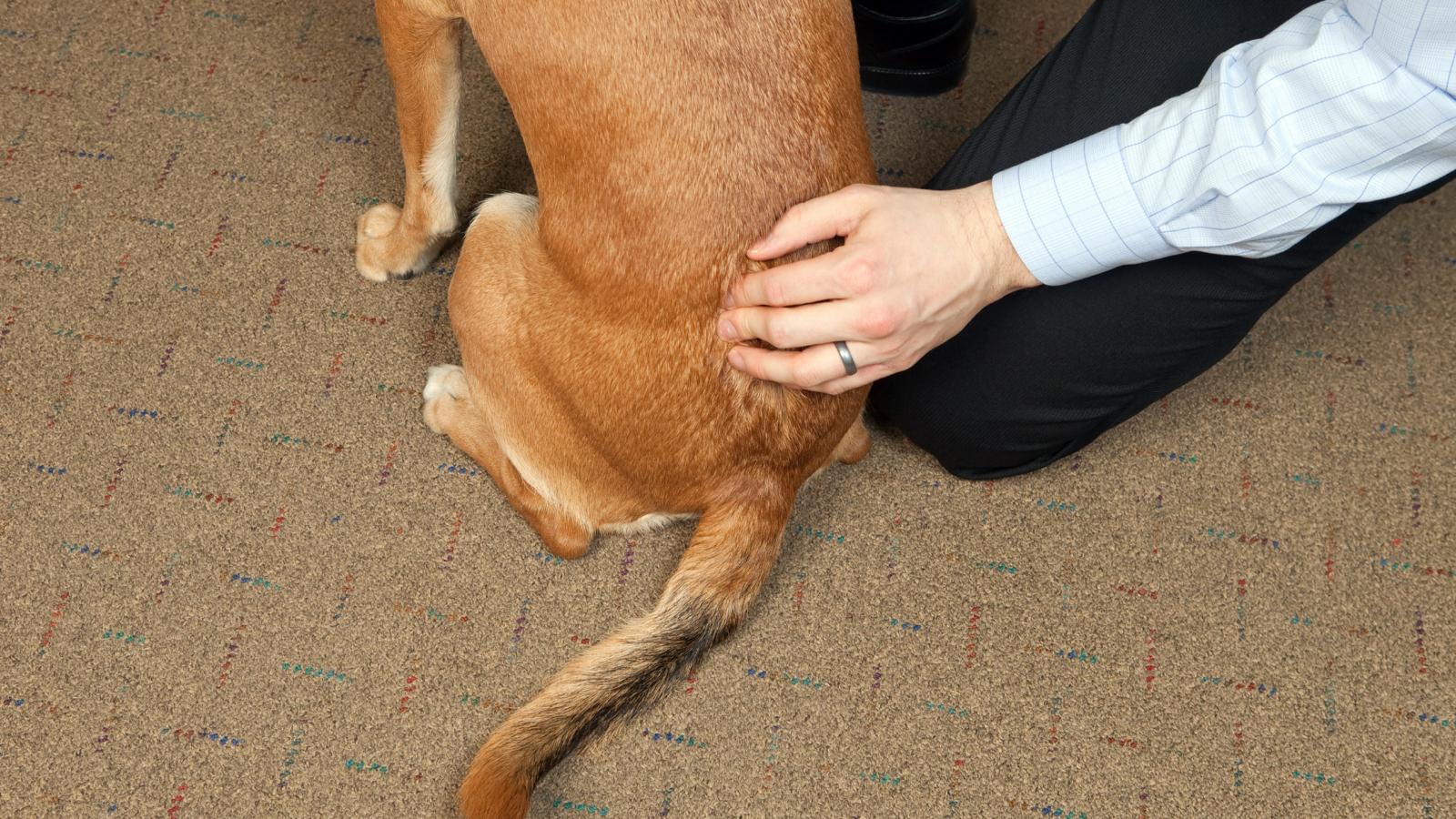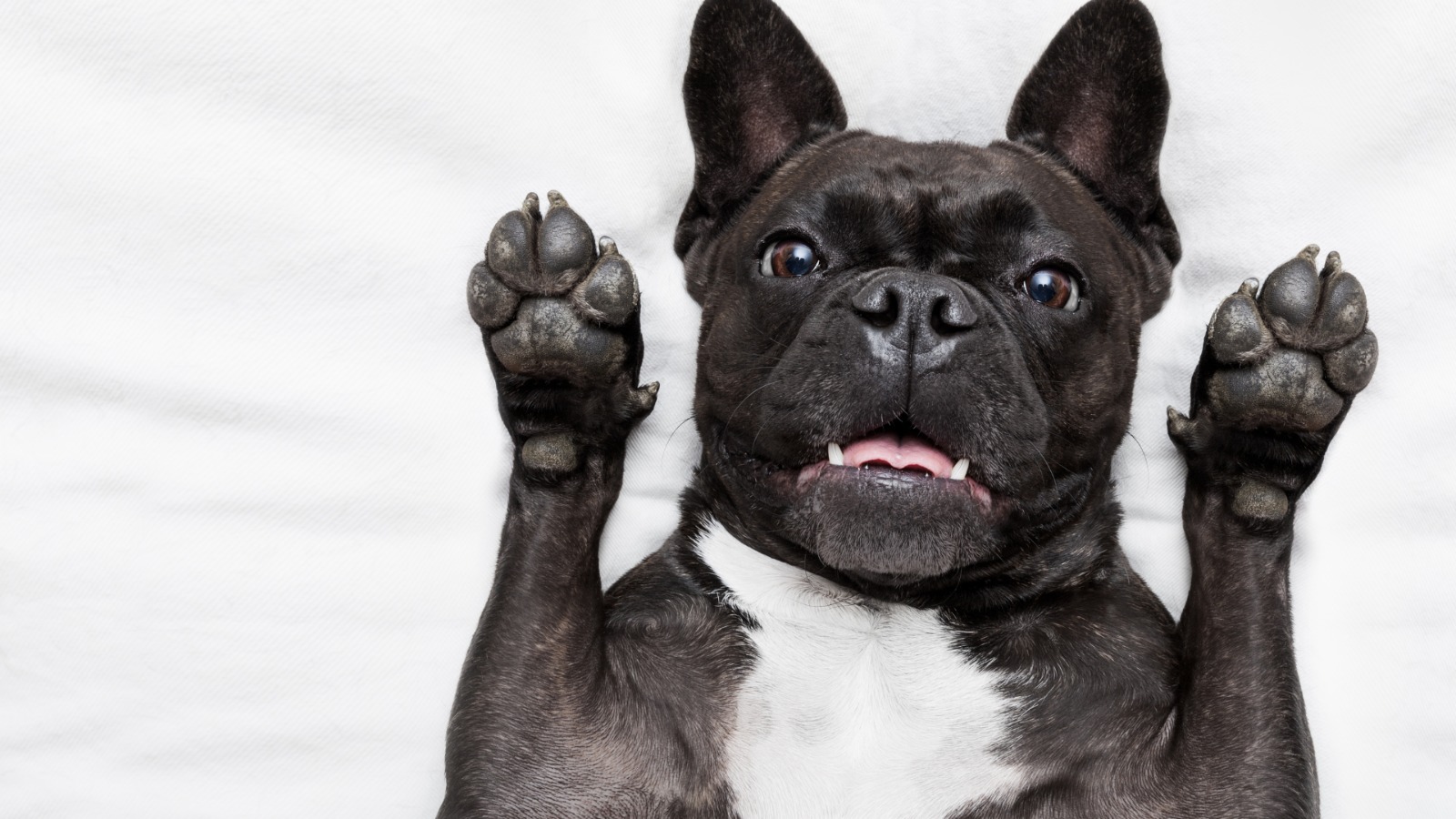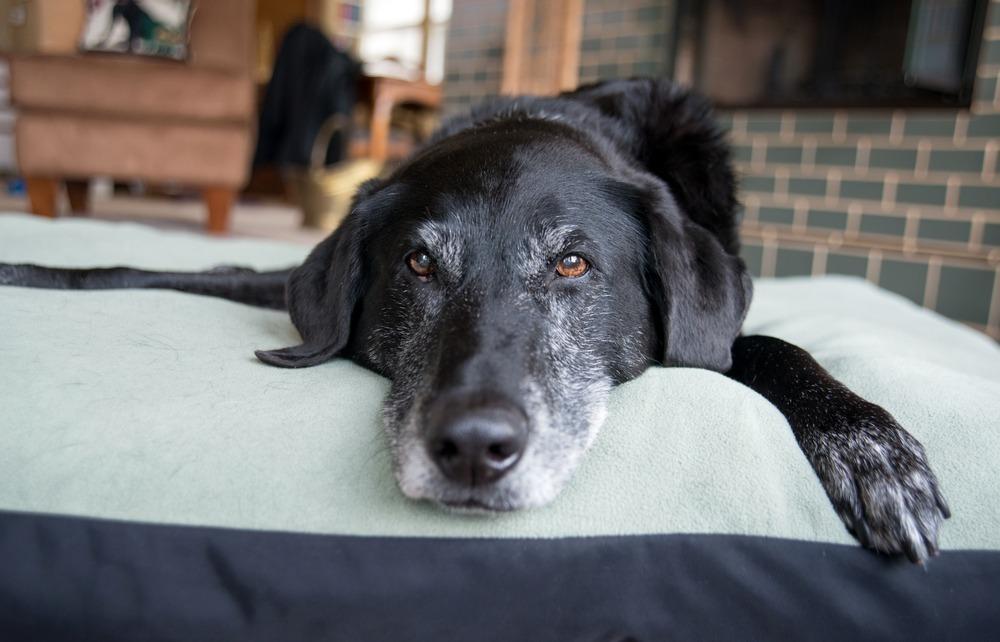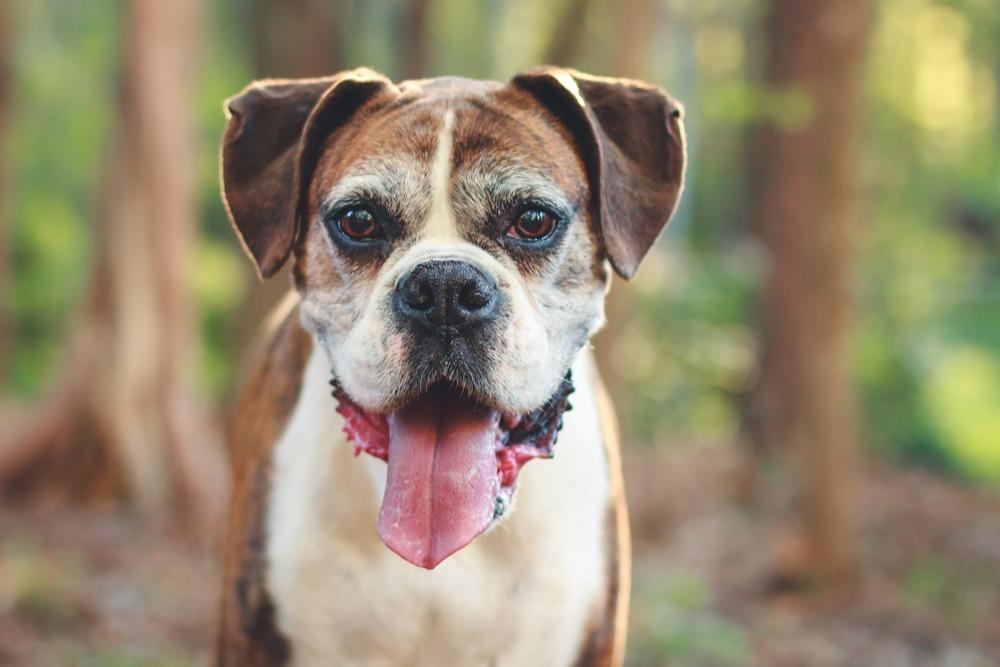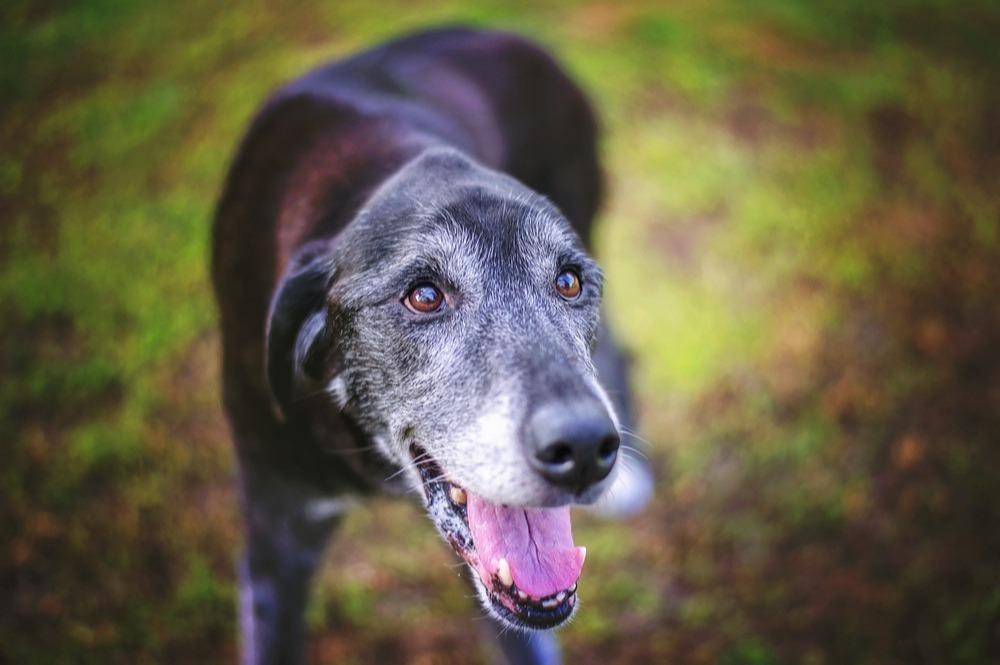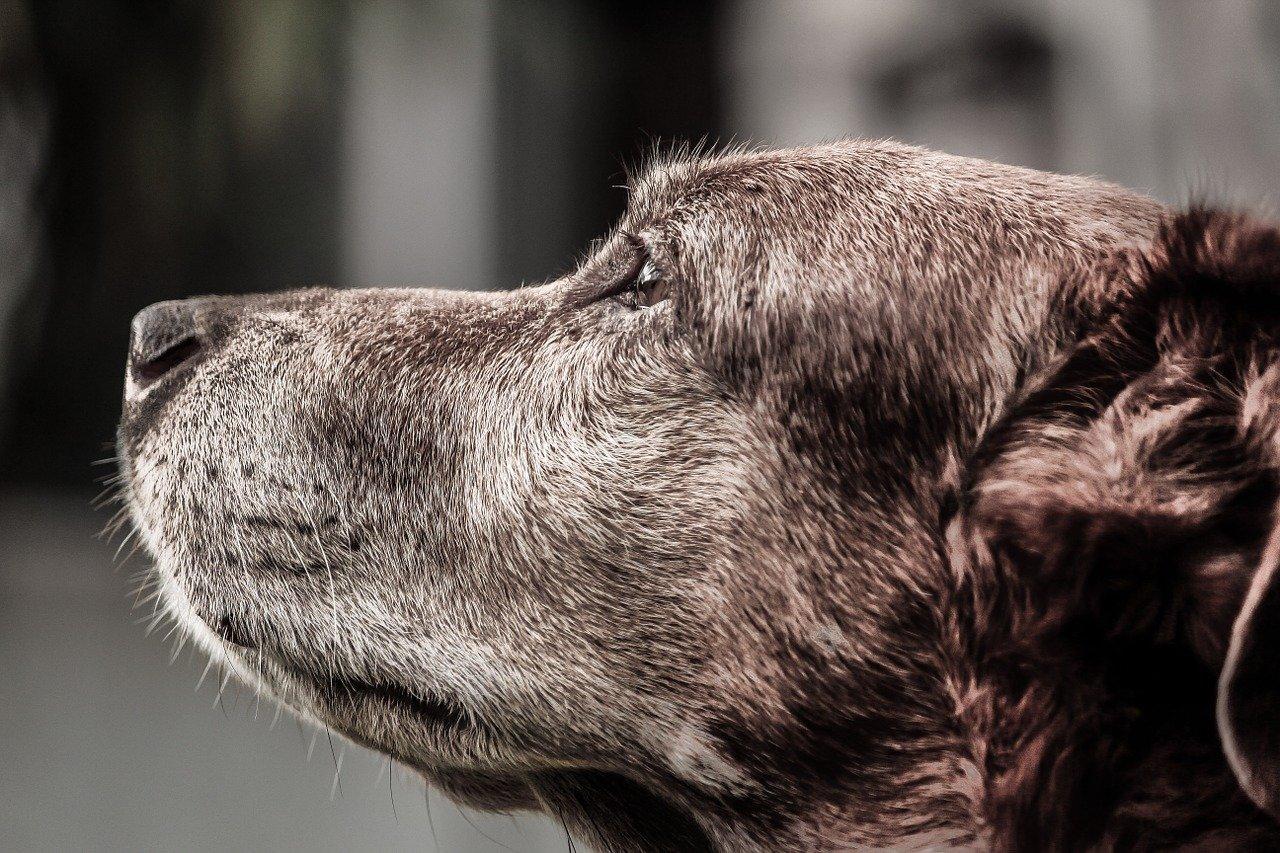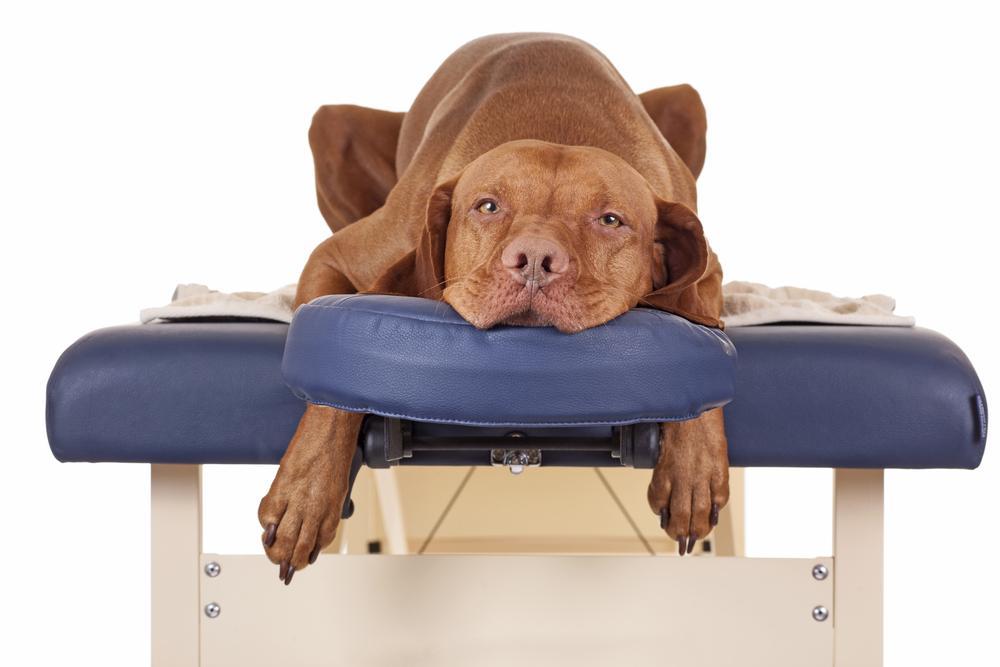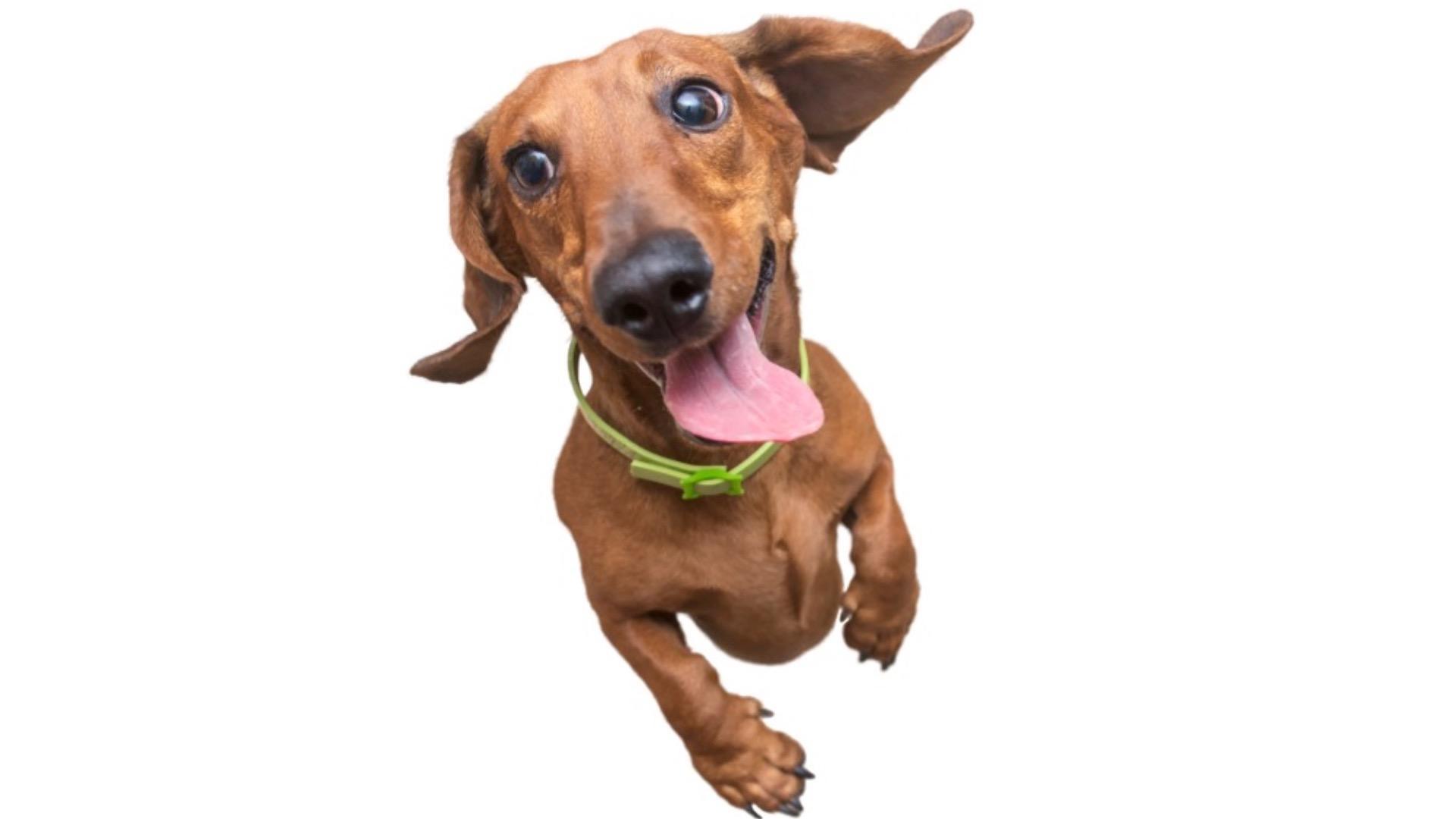
Often called Knuckling Under, the condition concerns the joints in the paw. Knuckling occurs when the dog walks and/or rests on the top of the foot as opposed to the pads. It can be sporadic, or on every step, and can happen on any one of the paws, multiple paws, or all paws.
Knuckling can happen in both puppies and senior dogs.
Signs of knuckling in puppies usually show between the ages of 6 and 14 weeks, and most commonly affects large and giant breeds, but can affect smaller breeds too. At the other end of the spectrum, senior dogs usually show symptoms of knuckling under at around 8 to 14 years of age, particularly those suffering from Degenerative Myelopathy or Arthritis.
There are a few signs of knuckling under to look out for:
Knuckling under is usually an outward symptom of an underlying health issue. We will outline these below.
The most common cause of knuckling in puppies is Carpal Flexural Deformity (CFD), more commonly called Carpal Laxity Syndrome. This condition, that usually presents clinically by 4 months of age, can be down to a dietary issue; usually excess protein consumption, overnutrition and undernutrition. In one study, the phosphorus, calcium, and magnesium values were increased in those with CFD when tested.
Another common reason for CFD is rapid growth spurts; this is particularly common in larger breeds of dog. When this occurs, the bones and tendons grow at different rates, causing the carpus to bow, and the paw to knuckle under.
Puppies with CFD may be required to wear a splint to keep the lower limb straight and hold the toes straight so they don’t knuckle under. Gradually building up the extent of the affected puppy’s exercise may also help rectify the deformity. A balanced, fresh diet is essential to avoid over or undernutrition.
The Ultimate Guide to a Healthy Puppy
Arthritis is an inflammatory joint disease. It is long lasting and progressive; meaning it continues to worsen with age. Walking may become difficult as joints seize up. Dogs with OA will often be stiff after laying down for periods of time.
The most common disease that can result in knuckling in senior dogs is osteoarthritis (OA).
According to Canine Arthritis Management, around 80% of dogs over 8 in the UK have osteoarthritis, possibly 35% of the dog population across all ages. In one study, 69% of the sample dogs with suspected cases of OA were confirmed cases. The researchers estimated that an average of 200,000 dogs are affected by OA each year.
Feeding a fresh diet, with additional supplements with anti-inflammatory effects, can help reduce pain and keep the joints healthy. Read our Guide to Inflammation here! Severe cases may require prescription NSAIDs from your veterinarian.
Similarly, to OA, Degenerative Myelopathy (DM) is also very common in senior dogs. DM is a progressive degenerative disease of the spinal cord, and often causes paralysis of the hind limbs. Degenerative Myelopathy is a hereditary disease which ultimately shortens the lifespan of the dog, usually within 2 years of diagnosis. Larger dogs will progress faster than smaller dogs.
A genetic test can be carried out on younger individuals before breeding to show any mutations to the SOD1 gene, which is where DM stems from. The SOD1 gene codes for the protein responsible for the destruction of Free Radicals in the body, called Superoxide Dismutase. When there is a lack of destruction of Free Radicals, they turn from beneficial to harmful as they begin killing cells which then causes the onset of degenerative diseases.
Some of the breeds most affected with DM include:
While the condition is often suggested as not painful, your veterinarian may prescribe NSAIDs. You may wish to add plenty of omega 3 and other anti-inflammatory supplements to your dog’s meals.
Many owners with dogs in the later stages of DM purchase a dog wheelchair to enable continued mobility.
Intervertebral Disc Disease (IVDD) is a spinal condition caused by the herniation of an intervertebral disc and can happen on any part of the spine. Retrogenes are copies of a standard gene, which haven’t copied correctly and have then inserted themselves into the genome. The Fibroblast Growth Factor 4 retrogene (FGF4) on chromosome 12 is mostly responsible for the chance of an individual suffering from IVDD as it controls the length of the spine.
IVDD is most common in chondrodystrophic dogs (those with short legs and long back) but can also occur in dogs with other structures
A study carried out by scientists in Sweden looked at insurance claims, thought to be representative of the entire population of dogs in Sweden. 40% of the claims involved some form of disc disease (not just IVDD),proving its becoming a fairly common issue seen in dogs today.
In the USA, around 20,000 surgeries are performed each year to resolve IVDD in dogs. Dogs with IVDD will have decreased stability, some may even suffer the inability to walk. It is a very painful condition, so shaking, lip licking, lethargy and loss of appetite are all symptoms. Knuckling under often occurs with IVDD due to the damage to the spinal cord and inflammation in the spine which affects nerves in the limbs. Dogs with IVDD may also suffer faecal and urinary incontinence, or retention depending on where in the spine the herniated discs are located.
Some breeds more at risk of IVDD are:
Keeping joints healthy and supple through the use of fresh food, correct supplements, and appropriate exercise and movements is paramount. If your dog has a long back, or are a breed predisposed to IVDD, avoid allowing your dog to jump on and off furniture, up and down steps.
The Ultimate Raw Feeding Guide for Dogs
When a dog experiences a Fibrocartilaginous Embolism (FCE), their spinal cord has been blocked from it’s blood supply by a piece of fibrous cartilage. The cartilage originates from the fibrous cartilage between the vertebrae in the spine, known as the nucleus pulposus.
One study suggests a correlation between a poor prognosis and amount of swelling and symmetrical symptoms following diagnosis. They also suggest a correlation between recovery rates and immediate intervention through physiotherapy and hydrotherapy, which are therapies your vet may recommend.
FCE is non-progressive, so once diagnosed, it doesn’t worsen. Unfortunately, there is no direct treatment for FCE as its impossible to remove the cartilage from the blood vessel. There is some anecdotal evidence to suggest laser therapy and acupuncture may benefit sufferers, but otherwise,time is the healer alongside physiotherapy at home and under the guidance of a neurologist.
Commonly called Wobbler’s Syndrome, Cervical Vertebral Instability (CVI) is another spinal condition which can lead to knuckling in dogs, especially seniors. The cervical area of the spine sits between the base of the skull and the scapula (shoulder blades). When the vertebrae in this area are unstable, they cause narrowing of the spine. Due to the narrowing of the spine in this area, the neurons down the legs to the paws are interrupted, which causes the dog to drag his paws and knuckle under.
A study looked at the difference in success rates of various surgical solutions for CVI. Spinal decompressive surgery had a short term success rate of around 80%, however 20% of these subjects had recurring symptoms.
In another study, which compared the typical surgical route to a more holistic route; electroacupuncture, results showed the surgical intervention group had a 20% success rate, whereas the electroacupuncture group had a success rate of 85% so this may be something to discuss with your veterinarian if your dog is diagnosed with CVI.
There are many things we can do to help our dogs’ joints and reduce the risk of knuckling over at various life stages.
As always, diet is key. Feeding a fresh, minimally processed, balanced diet is essential. Fresh diets often include glucosamine and chondroitin rich cartilage in its raw form which will help keep your dog’s joints supple. Read our blog on important nutrients to feed for joint health below.
Nutrients for Bone and Joint Health in Dogs
Picking the right joint supplement for your dog and life stage is very important. Read our guide on picking the right supplements for your dogs below.
How to Choose a Good Joint Supplement
Including plenty of omega 3 fatty acids will have an anti-inflammatory effect. Some great sources of these, provided your dog tolerates them, are raw eggs, krill oil, algae oil, and tinned or raw sardines.
Low Fat Fish
Essential Fats for my Dog’s Diet
Exercising your dog appropriately depending on breed predispositions, current health status and health history is extremely important. Avoid stairs, jumping to and from heights, whether it be furniture in the home or the car, avoid playing with ball launchers. When exercising your dog, aim for different terrains; hills, flats, rocky areas etc. as this will help strengthen the muscles around the joints to help reduce the risk of major joint problems in the future. Hydrotherapy is great for muscle toneage as well as rehabilitation.
Red Light Therapy is great for those who already suffer with their joints among other conditions. Red Light Therapy targets the cellular mitochondria which stimulates production of Cytochrome C Oxidase which is essential in all mammalian life to energize cells in order for them to function properly. Studies show animals with herniated discs, and other bone problems made faster improvements when using Red Light Therapy than those without it.
Some veterinarians may also suggest using a brace to support the dog’s lower limb and paw. The brace will fit around the lower limb, with a hook around the toes. This keeps the bone straight and forces the toes up into the correct standing position without knuckling under.
If your dog starts presenting with knuckling or any of the other symptoms discussed above, book in with your veterinarian for an official diagnosis. Don’t hesitate to book in with one of our team to optimise your dog’s diet and lifestyle to help with the issues presented.
MPN Team x

